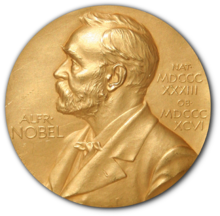Where is the Nobel Prize in Mathematics?
The Nobel Prize are prestigious awards given each year to individuals (as well as organizations) who have contributed significantly in cultural and scientific advances.
Alfred B. Nobel, the inventor of dynamite, bequeathed 31 million Swedish kronor in 1895 (about 250 million dollars in 2008) to fund the awards for achievements in Chemistry, Physics, Physiology and Medicine, Literature, and Peace. In 1901, the first set of awards were given, and in 1969, the Nobel Foundation established the Nobel Prize for Economics.
But did you ever wonder why there was no Nobel Prize of Mathematics?
One of the most famous rumors was the Gosta Mittag-Leffler affair. Mittag-Leffler, a famous mathematician of that time, supposedly had an affair with Nobel’s wife. However, aside from the fact that Nobel never married (he had a mistress though), there is no historical evidence that the affair really happened. Further, had Nobel included mathematics in the prize, Mittag-leffler would have to compete against top notch mathematicians Henri Poincare and David Hilbert.
Aside from a number of “urban legends” regarding the Mathematics Nobel Prize enigma, another probable reason why Nobel did not include Mathematics was the Scandinavian Prize for mathematics. The prize was established prior to the Nobel Prize, so Nobel probably felt that there was no need to establish a new one. Again, this was another speculation.
So what’s the equivalent of the Nobel Prize of Mathematics?
The Fields Medal is considered as the “The Nobel Prize of Mathematics.” It is awarded every four years, and the recipient must not be 40 years old before January 1 of the awarding year. In effect, many great mathematicians missed the award because they have done their best work later in life. As a matter of fact, even Andrew Wiles, the “super mathematician” who solved the 300-year old Fermat’s Last Theorem, never received a Fields medal. He was 41 when he proved the theorem.
